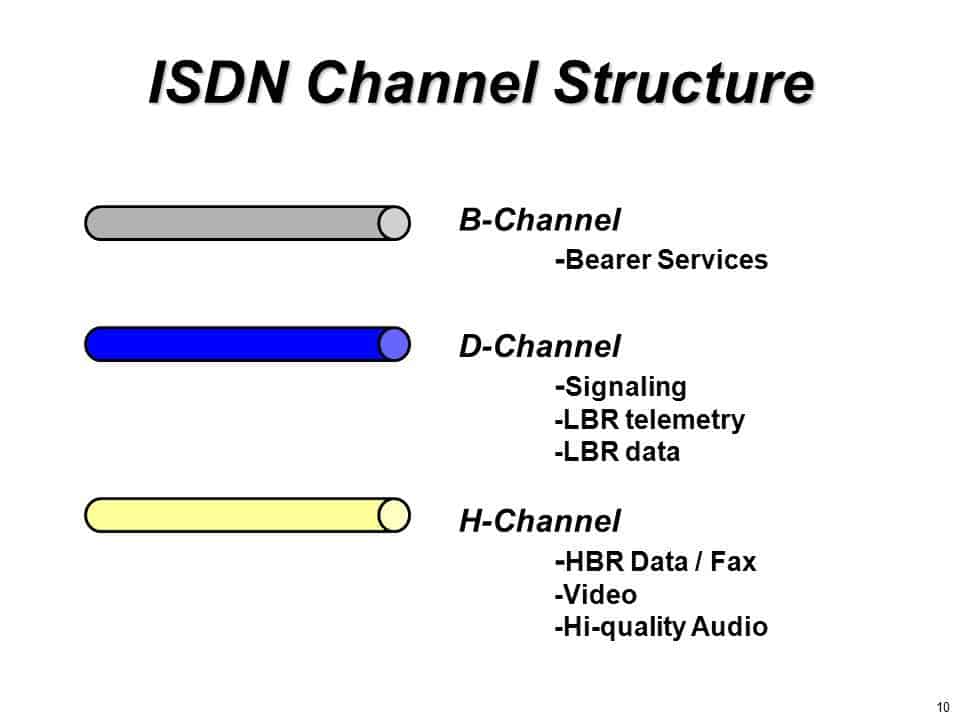In the specialized domain of telecommunications, the H Channel stands as a critical component in the architecture of Basic Rate Interface ISDN (BRI-ISDN) services. Governed by standards set by the International Telecommunication Union (ITU), H Channels represent an advanced configuration of ISDN B channels, tailored to handle high-capacity data transmission efficiently.
This article delves into the intricate world of H Channels, unraveling their structure, functionality, and significance in modern digital communication systems. From understanding the basic concept to exploring its practical applications, this comprehensive guide aims to demystify H Channels for professionals and enthusiasts alike, providing an insightful look into this essential aspect of telecommunication technology.
In this article:
- What is H Channel?
- Types of H Channels
- Technical Specifications of H Channels
- Implementation and Uses of H Channels
- H Channels in Modern Networking
- References

1. What is H Channel?
An H Channel in the context of ISDN (Integrated Services Digital Network) is a type of channel configuration that offers higher data transmission capacities by aggregating standard ISDN B channels. Unlike the basic B channel, which typically carries a single 64 Kbps data stream, H Channels are designed to handle larger volumes of data by combining multiple B channels.
The ITU has defined various types of H Channels, each suited for different levels of data transmission requirements. For instance, an H0 channel combines six B channels, offering a total transmission rate of 384 Kbps. Similarly, an H11 channel aggregates 24 B channels to provide 1.536 Mbps, and an H12 channel combines 30 B channels for a total of 1.920 Mbps.

H Channels are particularly beneficial in scenarios requiring high data throughput, such as video conferencing, large data file transfers, and multimedia applications. They offer the reliability and structured approach of ISDN with the added advantage of greater bandwidth, making them a valuable asset in various telecommunications setups.
See also: D Channel.
2. Types of H Channels
Breakdown of Different H Channel Configurations
H Channels in ISDN are categorized based on their capacity to aggregate B channels, each offering unique bandwidth capabilities suited for varying telecommunications needs. The primary types are:
- H0 Channels: These channels aggregate six B channels, resulting in a cumulative bandwidth of 384 Kbps. H0 channels are often employed for applications like video conferencing and transmitting medium-sized data files.
- H11 Channels: A more robust configuration, H11 channels bundle together 24 B channels. This amalgamation offers a significant boost, culminating in a bandwidth of 1.536 Mbps. H11 channels are suited for larger data transfers, including high-definition video streaming.
- H12 Channels: At the higher end of the spectrum, H12 channels combine 30 B channels. This setup yields a substantial bandwidth of 1.920 Mbps, ideal for intensive data applications, such as broadcast-quality video transmission and large-scale data communications.
Comparative Analysis of H0, H11, and H12 Channels
- Bandwidth Efficiency: H0 channels, while offering increased bandwidth over a single B channel, are more suited for less demanding applications. In contrast, H11 and H12 channels cater to bandwidth-intensive tasks, providing the necessary throughput for high-demand applications.
- Application Suitability: H0 channels are a go-to for standard video conferencing and intermediate data needs. H11 channels, with their higher capacity, are apt for high-definition video and large file transfers. H12 channels, representing the pinnacle of H Channel capacity, are designed for the most demanding data tasks, including broadcast-quality video.
- Adaptability: Each channel type offers varying degrees of adaptability, with H0 channels being more accessible for smaller-scale operations and H12 channels being tailored for extensive, large-scale telecommunication environments.
3. Technical Specifications of H Channels
Bandwidth and Data Rate Details
H Channels are distinguished by their enhanced bandwidth and data rates, achieved through the combination of multiple B channels. Specifically:
- H0 Channels: Provide a total bandwidth of 384 Kbps.
- H11 Channels: Offer a more substantial bandwidth of 1.536 Mbps.
- H12 Channels: Deliver the highest bandwidth in this category at 1.920 Mbps.
Underlying Technical Standards
The technical specifications of H Channels are governed by ITU standards, ensuring uniformity and compatibility across different telecommunications systems. These standards dictate aspects such as channel aggregation methodology, signaling protocols, and error handling mechanisms.
- Signal Integration: The process of combining B channels to form H Channels follows a specific protocol, ensuring efficient utilization of the available bandwidth.
- Quality of Service (QoS): ITU standards also encompass QoS parameters, guaranteeing a certain level of performance and reliability in H Channel communications.
- Compatibility: These standards ensure that H Channels can effectively interface with other elements of the ISDN network, maintaining a harmonious and integrated network environment.
In summary, H Channels represent a versatile and powerful component of ISDN, offering scalable solutions for diverse data transmission requirements. Understanding their types and technical specifications is crucial for professionals dealing with advanced telecommunication systems and network architecture.
4. Implementation and Uses of H Channels
Practical Applications in Telecommunication
H Channels find their utility in a range of telecommunication applications, each leveraging their high-bandwidth capabilities. Some of the key applications include:
- Video Conferencing: H0 channels, with their 384 Kbps bandwidth, are ideal for standard-definition video conferencing, providing smooth and uninterrupted video streams.
- High-Definition Multimedia Transmission: H11 and H12 channels, offering 1.536 Mbps and 1.920 Mbps bandwidth, respectively, are perfectly suited for high-definition video streaming and broadcasting, catering to media houses and streaming services.
- Large Scale Data Transfer: For businesses and research institutions dealing with large volumes of data, H11 and H12 channels provide the necessary bandwidth to facilitate swift and efficient data transfers.
Case Studies of H Channel Deployment
- Telemedicine: A hospital network utilized H0 channels to implement a telemedicine service, allowing for real-time video consultations between patients in remote locations and specialists in urban centers.
- Distance Learning: An educational institution employed H11 channels to deliver high-definition distance learning courses, enabling interactive and engaging online classes for students across different regions.
- Media Broadcasting: A broadcasting company used H12 channels for live transmission of high-definition sports events, ensuring high-quality video feeds for viewers worldwide.
5. H Channels in Modern Networking
The Role of H Channels in Current Network Architectures
In the current landscape of network architectures, H Channels play a specialized role, particularly in scenarios requiring high bandwidth. They are integral in settings where traditional B channels’ bandwidth is insufficient yet where the infrastructure supports ISDN. Their ability to amalgamate multiple B channels makes them a viable option for high-capacity data needs.
Comparison with Contemporary Technologies
While H Channels offer robust solutions in specific contexts, they face competition from newer technologies like fiber optics and advanced wireless communication systems, such as 5G. These contemporary technologies provide higher bandwidths and greater flexibility. However, the relevance of H Channels persists in environments where ISDN infrastructure is prevalent, and the upgrade to more modern technologies is not feasible due to logistical, financial, or technical constraints.
- Fiber Optics: Offers significantly higher bandwidth and speed compared to H Channels but requires extensive infrastructure overhaul.
- 5G Networks: Provide faster data transmission and lower latency, but their rollout is still in progress, making H Channels a reliable interim solution in certain areas.
In conclusion, H Channels remain a pertinent component within specific realms of telecommunications, especially in legacy systems or where ISDN infrastructure is well-established. Their ability to handle high-capacity data transmission continues to make them a valuable asset in various applications, despite the advent of newer technologies.
7. References
Technical Documentation and ITU Standards
- ITU-T Recommendations Series G (Transmission Systems and Media, Digital Systems and Networks).
- ITU-T Recommendations Series I (Integrated Services Digital Network).
RFCs
Books
- “ISDN and Broadband ISDN” by William Stallings.
- “Data and Computer Communications” by William Stallings (sections on ISDN).
- “The ISDN Consultant: A Stress-Free Guide to High-Speed Communications” by Robert E. Lee.